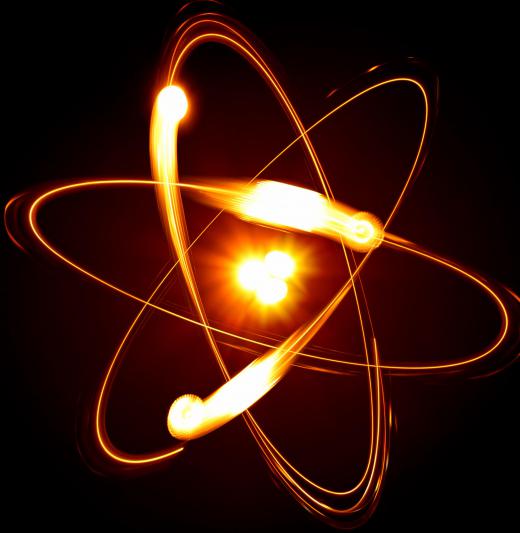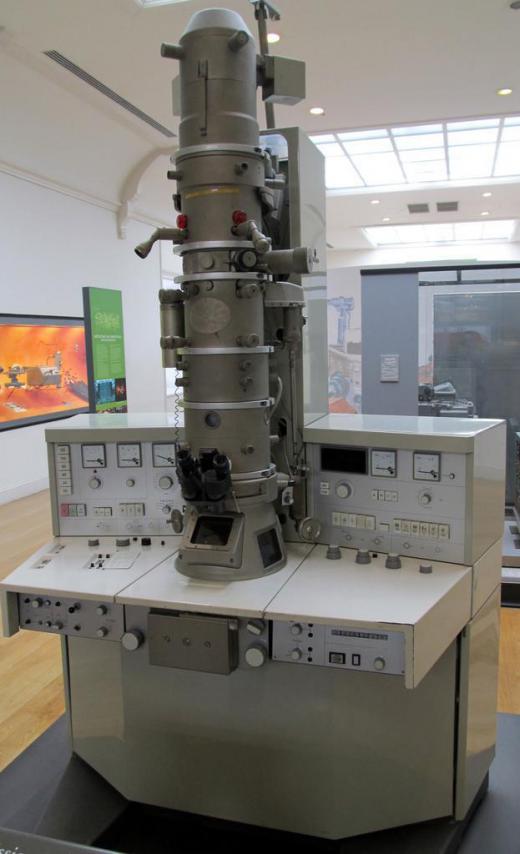What is a Neutron?
 Michael Anissimov
Michael Anissimov
A neutron is a tiny subatomic particle that can be found in practically all forms of conventional matter, with the only stable exception being the hydrogen atom. The particle's home is in the atomic nucleus, where it is bound closely with protons through the strong nuclear force, the strongest force in nature. Neutrons are responsible for about half the weight of conventional matter by volume.
This particle was given its name because it is electrically neutral. It can be seen as a proton and an electron smashed together. Because both of these particles have opposite charge of the same magnitude, their fusion results in a chargeless particle. This lack of a charge can make neutrons difficult to detect, but techniques for observing them have been formulated that take advantage of the way they interact with the nuclei of various atoms. The particles can sometimes behave charged in a limited way because their constituents, quarks, have small charges.

Normal atoms have a balanced number of protons and neutrons in their nucleus. For example, helium has two protons and two neutrons, and iron has 26 protons and 26 neutrons. When this balance is broken, the atom is referred to as an isotope, though technically normal atoms are just isotopes that are stable, and the word "isotope" is used colloquially to describe non-stable atomic variants.

The neutron was originally discovered in 1930. Its antiparticle, the antineutron, was discovered in 1956. While it is a subatomic particle, the neutron is not fundamental. It is composed of two down quarks and one up quark, making it classified a baryon. The fact that it is composed of smaller parts was not theorized until 1961.
This particle has a similar mass to its nuclear partner, the proton, except it is slightly greater. It can survive outside of the nucleus of an atom, but only for a period of about 15 minutes. At the end of that time, it undergoes a process called beta decay, whereby it breaks down into a proton, an electron, and an antineutrino.

An understanding of neutrons has been critical in the development of nuclear energy and nuclear weapons. Unstable isotopes emit these particles when they break down, which can start nuclear chain reactions. The large rods inserted into nuclear reactors exist to limit the number of neutrons bouncing around.
AS FEATURED ON:
AS FEATURED ON:













Discussion Comments
My desire is to locate the specific particle, whether an atom in total or a part thereof, that has an inner diameter dimension base that always, constantly and without fail, is evenly divisible by 12, while simultaneously, via its content, has an exterior shell that would resemble a perfectly spherical, multi-thickness eggshell that would appear totally absent of content, until journeyed down into for approximately 12,000,000,000,000 light years or until a universe appearing core is noted therein. Any suggestions?
Time is an issue on distance and therefore measurability. Your 12 to the 12th numeration is as good as the number 1 from infinity.
A neutron walks into a bar and asks how much for a beer. The bartender looks at him and says, "For you, no charge."
My desire is to locate the specific particle, whether an atom in total or a part thereof, that has an inner diameter dimension base that always, constantly and without fail, is evenly divisible by 12, while simultaneously, via its content, has an exterior shell that would resemble a perfectly spherical, multi-thickness eggshell that would appear totally absent of content, until journeyed down into for approximately 12,000,000,000,000 light years or until a universe appearing core is noted therein. Any suggestions?
Post your comments